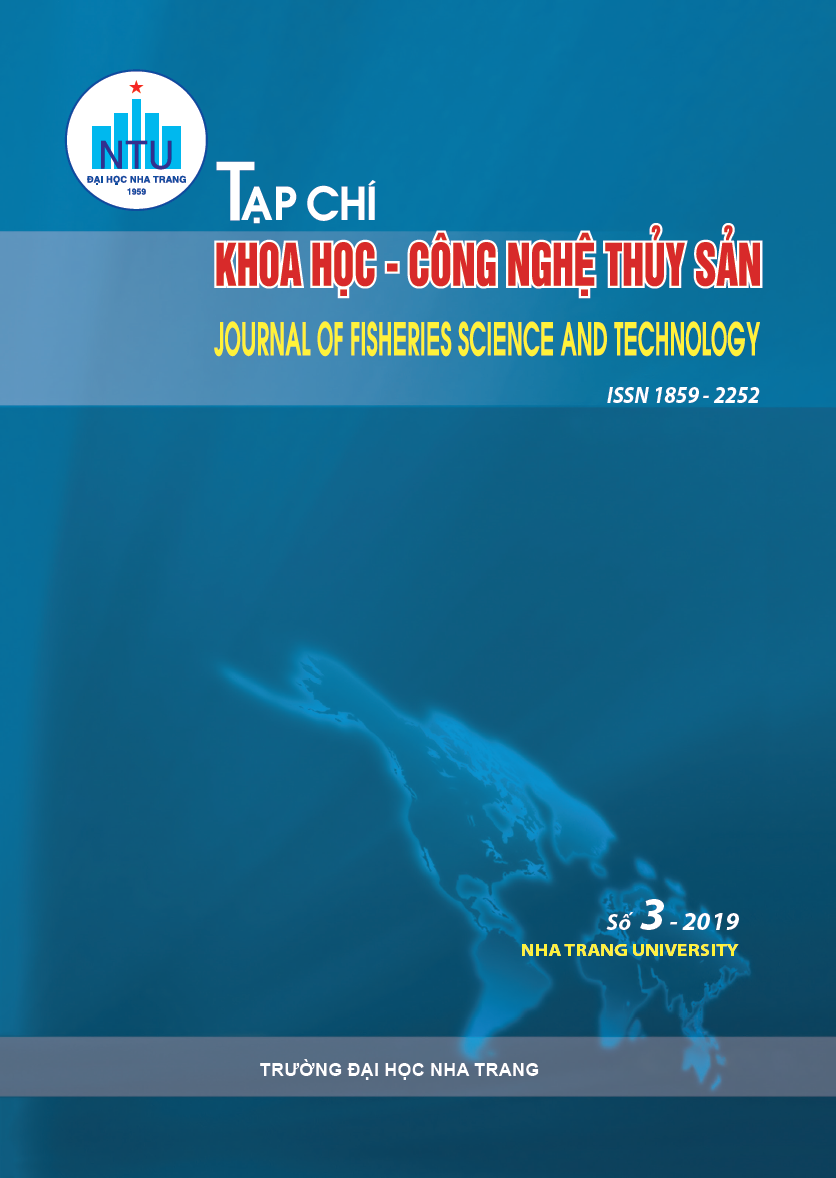##plugins.themes.huaf_theme.article.main##
Abstract
Butter Catfish is a high economic value species. Therefore, in order to control and provide fingerling sources for fish production, culture of broodstocks would be essential. An experiment of 12 months duration was carried out as a completely randomized design (CRD) in small net-cages (hapas) which were put in ponds. There were four dietary treatments including trash fish (NT1), commercial pellets with 30% protein (NT2), 35% protein (NT3) and 40% protein (NT4) content. The stocking density was 30 individuals per square metre. After the experiement, maturity rates of the fish in NT1, NT2, NT3 and NT4 treatment were 77.8%, 44.4%, 44.4% and 55.6% respectively; while Gonadosomatic indices were 13.88%, 10.86%, 10.02% and 11.51% respectively. There was a significant difference in these parameters between NT1 and NT2 & NT3 (P<0.05). The absolute and relative fecundity reached 5,571 – 9,586 eggs per female and 167,149 – 238,736 eggs kg-1 female, respectively. The egg diameter in the stage III and in the stage IV reached 0.60 – 1.25 mm and 0.93 – 1.43 mm, respectively. The results showed that the most suitable feed for maturity culture of butter catfi sh in captive conditions was trash fi sh and commercial feed with 40% protein content.
Keywords: maturity culture, feed, butter catfi sh, Ompok bimaculatus

